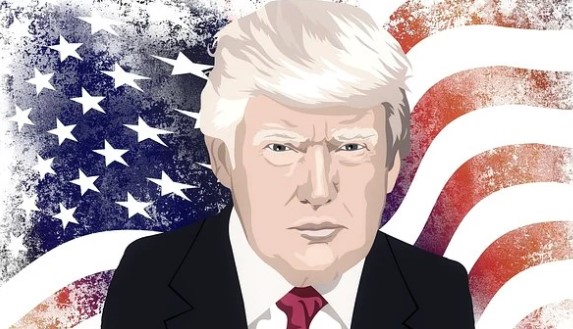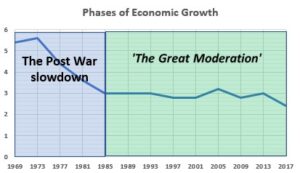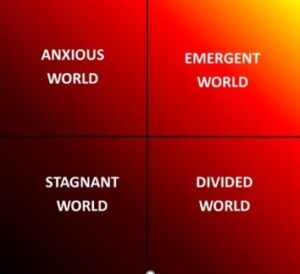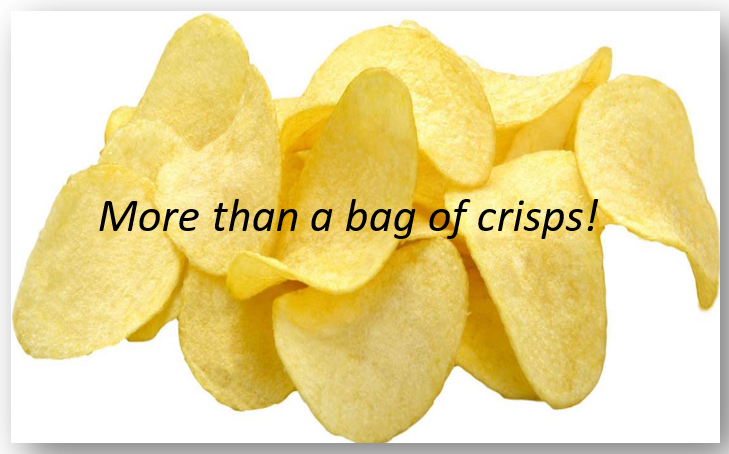Speaking the Unspeakable
Context
After the end of the Cold War between the RUSSO and AM-Blocks, global institutions took grip of the world’s financial system. Inflation and economic growth were moderated (see figure below; from Stock and Watson 2002) through cooperative actions of the main central banks and multilateral bodies such as the IMF and World Bank.
Coupled with this dampening of economic volatility, came an expansion of globalisation and its consequence, greater global interdependence. In the parlance of the Segmented World Model, the world moved in the direction of an EMERGENT outcome.
The distribution of wealth over this time was far from equal but sufficient to ‘trickled down’ in order to fund the global agencies centred on the UN, allowing Steven Pinker in 2018 to declare the Enlightenment recharged (Pinker, Enlightenment Now 2018).
I went to one of Pinker’s book launches at the RSA in London February 2018 and was unsettled by his optimism and refusal to entertain any alternative. But he had considerable support because this was a story the wealthy wanted to hear – that the negative views about the world of the 21st Century, was an illusion.
I left without comment having just finalised the GC-FI Matrix for the Segmented World Model and knowing that, despite our ingenuity, the EMERGENT-Type WORLD he was advocating was just one outcome and one that would require more than just ‘reason and sympathy’ to overcome the problems the three global drivers were now posing.
In the ‘real’ World, the five Powerblocks responded differently. The liberalisation of markets and availability of cheap finance facilitated the rapid development of the SINO – and to a lesser extent- INDO-BLOCK’s – graphically shown in the sharp rise in GHG emissions. The AM-Block went through a period of reflection as its imperial dominance waned and the benefits of globalisation began to be questioned. Fortunately, a new, albeit short-term, source of fossil fuel energy was found that allowed a popular, ‘Divided World’, ‘America First’ mindset to emerge.
Travelling in the opposite, philosophical, direction was the enlarged EURO-BLOCK, with a common currency, a generous central bank and open internal borders. Leading this new optimistic outlook was Germany, led by a fluent Russian speaking leader with close links to the newly reconstituted RUSSO-BLOCK (Russian Federation). A strong interdependence was forged between the EURO and RUSSO-BLOCK’s in particular with the German state, that by 2020 had succumbed to Green Party demands to shut down its energy supply from nuclear and rely on the RUSSO-BLOCK for over forty percent of its energy supply from gas.
Now, as the tanks roll into Kyiv, the expansionist STAGNANT WORLD strategy of the RUSSO-BLOCK is laid bare. The fundamental weakness of global openness is exposed. In the words of the former AM-Block President Trump ‘The problem is not that Putin is smart, which of course he’s smart, but the real problem is that our leaders are dumb’ (Trump at CPAC 26/2/22).
Putting aside the political motivations of the former President, it is difficult to argue with his conclusion with regards to the naivety of the EURO-BLOCK – and Germany in particular.
But threats, on the scale that the RUSSO-BLOCK has made, have unintended and unexpected consequences. The driving force for the unity of the proto-EURO BLOCK was military threat from the RUSSO-Block during the Cold War. That may now be rekindled, bringing not just the European countries (including the UK) together but also upgrading the readiness and capability of the military alliance between the AM and EURO-Block’s (NATO).
The path to an EMERGENT WORLD will be hard and will involve the G5 (The five Powerblocks) eventually recognising, in Churchill’s words that ‘jaw-jaw’ is infinitely safer in a nuclear-armed world than ‘war-war’.
But that will depend on sane leadership, in the two most heavily armed Powerblocks. Without that, the STAGNANT WORLD may come sooner than any of us expect.
David Nash





